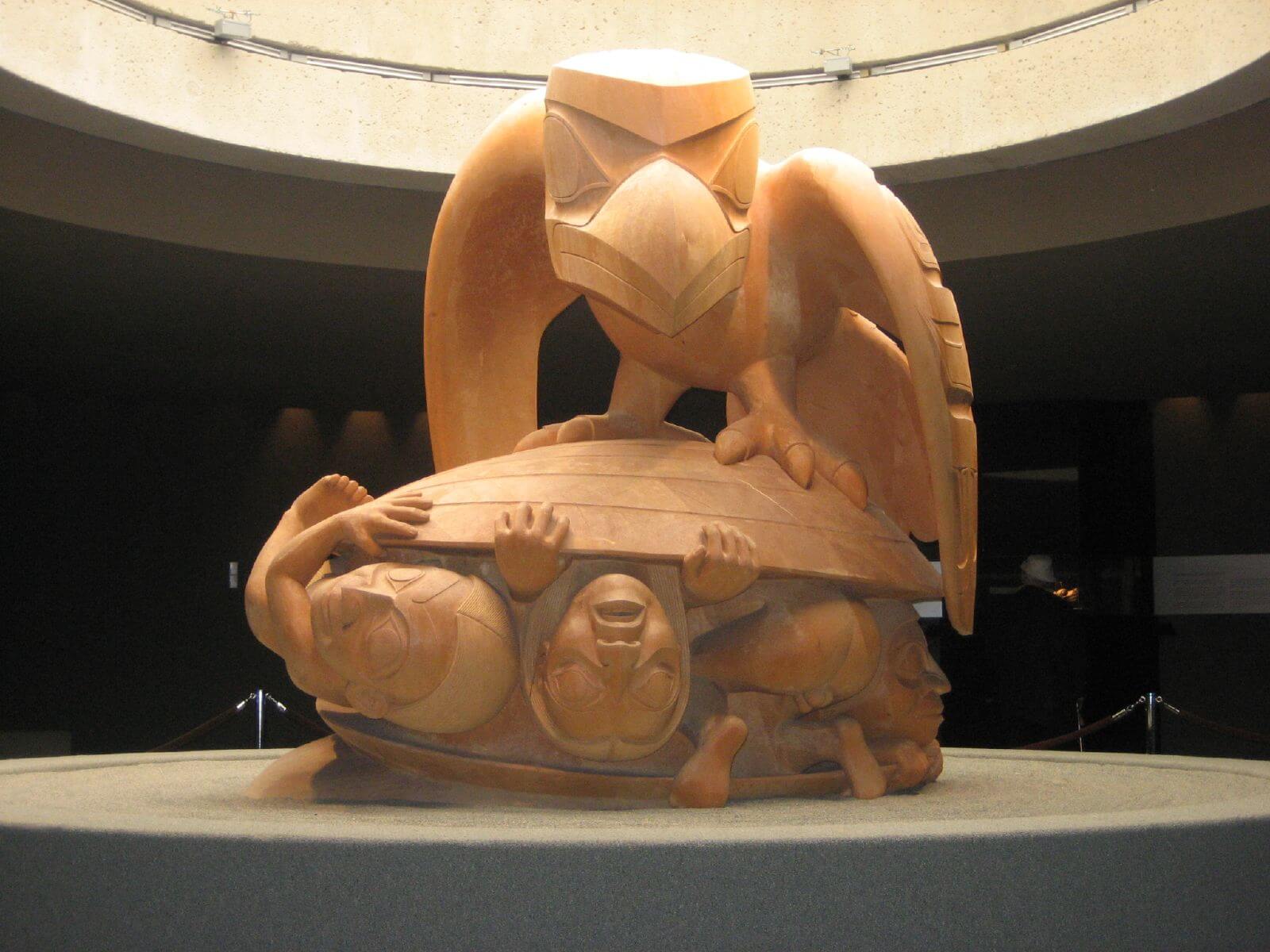 Yesterday, we talked about the role of the between spaces in Haida mythology. Today, I’d like to discuss Raven, and the role Raven plays in Haida myth.
Yesterday, we talked about the role of the between spaces in Haida mythology. Today, I’d like to discuss Raven, and the role Raven plays in Haida myth.
Raven appears in many of the most lasting of the Haida myths, and he was an extremely important personage in the imagination of the Haida.
Of all the animals and spirit beings that exist in the Haida world, none may be more important to the Haida sense of self than Raven; god, trickster, world-maker. He is there at the creation of the world, and, in the following story, invites the first humans to come out of their hiding places to enjoy this new world:
“The great flood, which had covered the earth for so long, had at last receded and the sand of Rose Spit, Haida Gwaii, lay dry. Raven walked around the sand, eyes and ears alert for any unusual sight or sound to break the monotony. A flash of white caught his eye and there, right at his feet, half buried in the sand, was a gigantic clam shell. He looked more closely and saw that the shell was full of little creatures cowering in terror in his enormous shadow. He leaned his great head close and, with his smooth trickster’s tongue, coaxed and cajoled and coerced them to come out and play in his wonderful new shiny world. These little dwellers were the original Haida, the first humans.” (Bill Reid, The Raven and the First Men)
This story is depicted in the image at the top of this post. The image of the spirit-being Raven, crouched on the clam shell with the first humans sticking out, speaks powerfully to the level of importance that Raven plays in the imagination of the Haida, even to this day.
Haida society is divided into two moieties, Eagle and Raven. For a people living in the borderlands, yet also in the center, this division makes perfect sense. Eagle represents the center, regular, human society, the right-hand path. Raven represents the liminal, non-human society, the left-hand path. It is with Eagle that food is gathered, judgements are passed down, marriages happen. Raven is the realm of the myth in it’s constantly changing form, that step away from the human world that must happen for art and story to exist.
It is because they are a people at the edge of the world that the Haida hold Raven in such high respect. They understand the need for that entry to the liminal spaces. Gods and humans alike are divided into Eagle and Raven sides; “it is part of the intrinsic structure of the world.” (Bringhurst, page 67)
The trickster is able to pass through boundaries with great ease, and Raven is able to navigate the liminal space of the Haida easily, creating a path for the Haida to do the same, as they must in order to live and function as they do.
